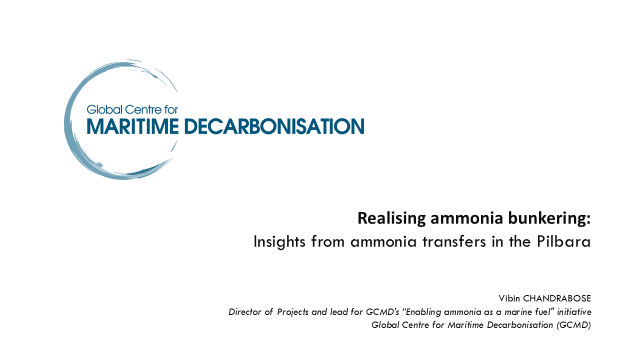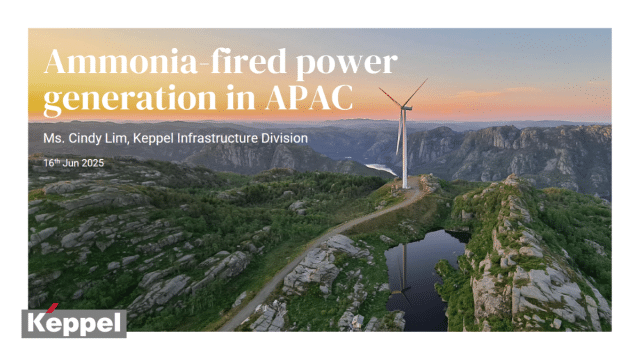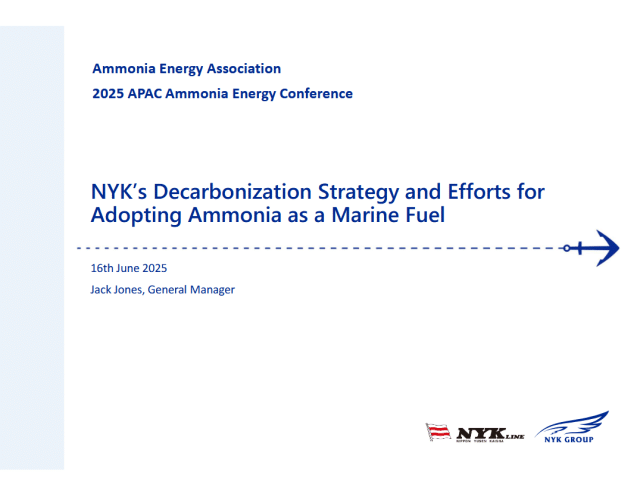Ammonia Bunker Fuel
Ammonia-fired power generation in APAC
MOL’s activities in next-generation energy as social infrastructure company
NYK’s decarbonization strategy and efforts for adopting ammonia as a marine fuel
Safety approach and protocols applied in ammonia marine fuel: trials in the Port of Singapore
Ammonia-powered shipping in APAC: steps to deployment
Azane and Ofiniti: digitalisation of ammonia bunkering
Azane Fuel Solutions and Ofiniti will partner to build a digital delivery service for Azane’s planned network of ammonia bunkering facilities across Scandinavia.
NH3 Clean Energy: bunkering and CCS agreements for flagship project
NH3 Clean Energy will collaborate with Woodside to progress the Angel CCS project offshore of the Pilbara in northwestern Australia. Meanwhile, NH3 will work with Oceania Marine Energy and Pilbara Ports to establish an ammonia bunkering service at the Port of Dampier by 2030, targeting iron ore transport between Australia and Asia.
Ammonia marine fuel cheapest option from late 2030s, dual-fuel vessels lowest-risk
Based on their analysis, UMAS and the University College of London conclude that scalable e-fuels have the highest potential to meet shipping’s new decarbonization targets, but that the next decade is critical to ensure supply chains are ready to supply these fuels. Ammonia-LNG dual-fuel vessels represent the lowest-risk, cheapest decarbonization option to the mid 2030s.
Class societies prepare for marine ammonia fuel: safe operations, crew training, and risk management
ClassNK, DNV, Lloyd’s Register and the American Bureau of Shipping have all released new resources to support the implementation of marine ammonia fuel. We explore vessel operation guidelines and best-practice recommendations, seafarer training programs, and models for ammonia leak dispersion onboard vessels.









